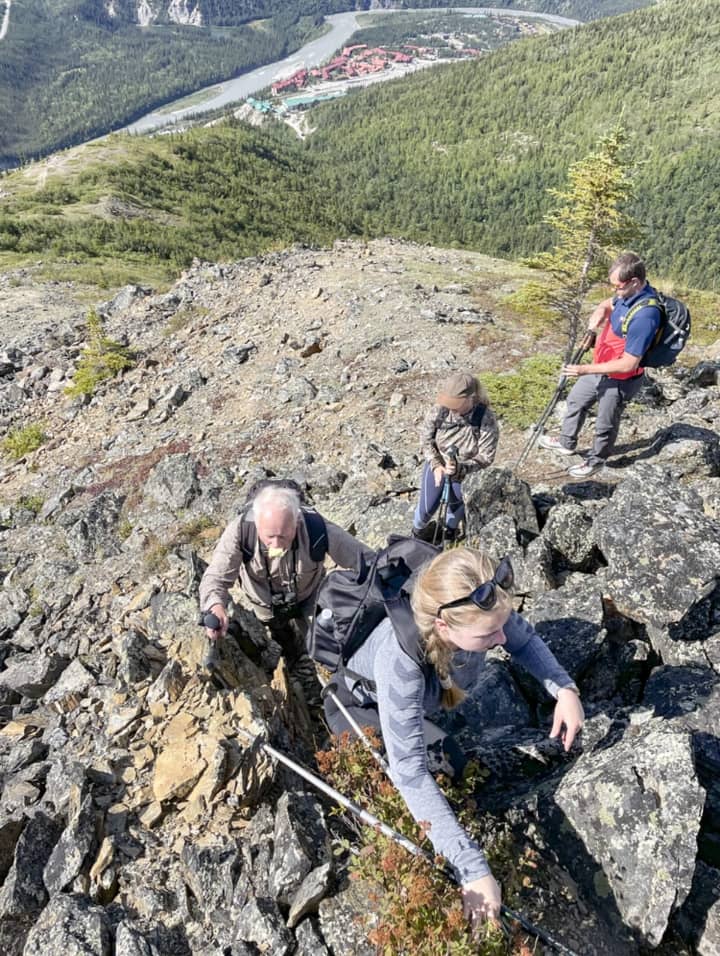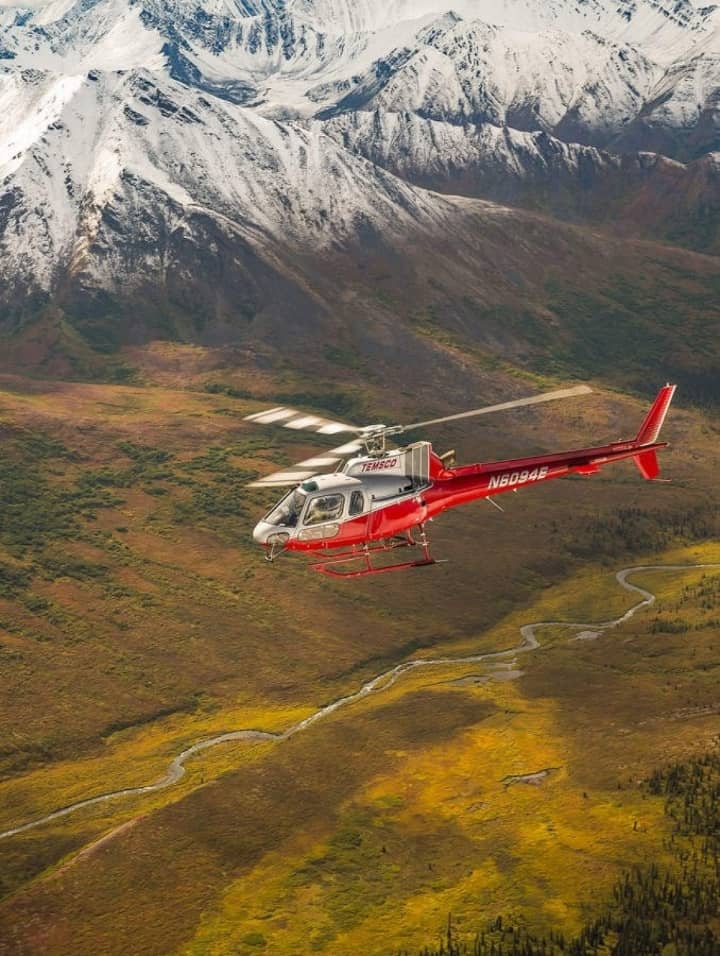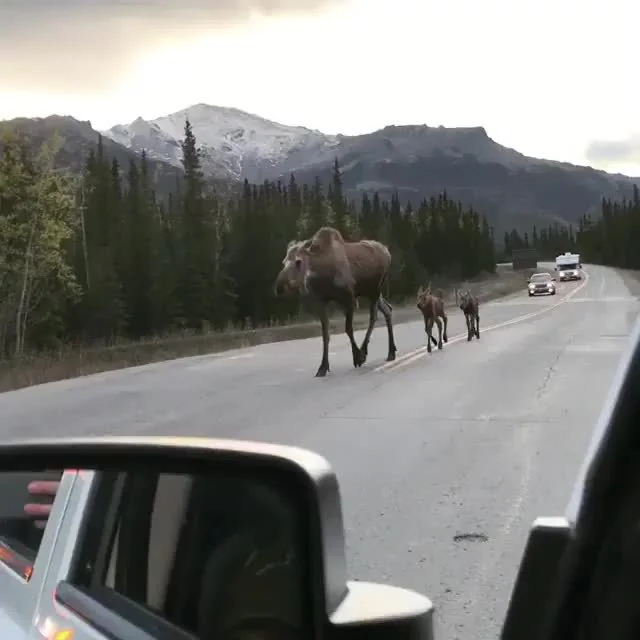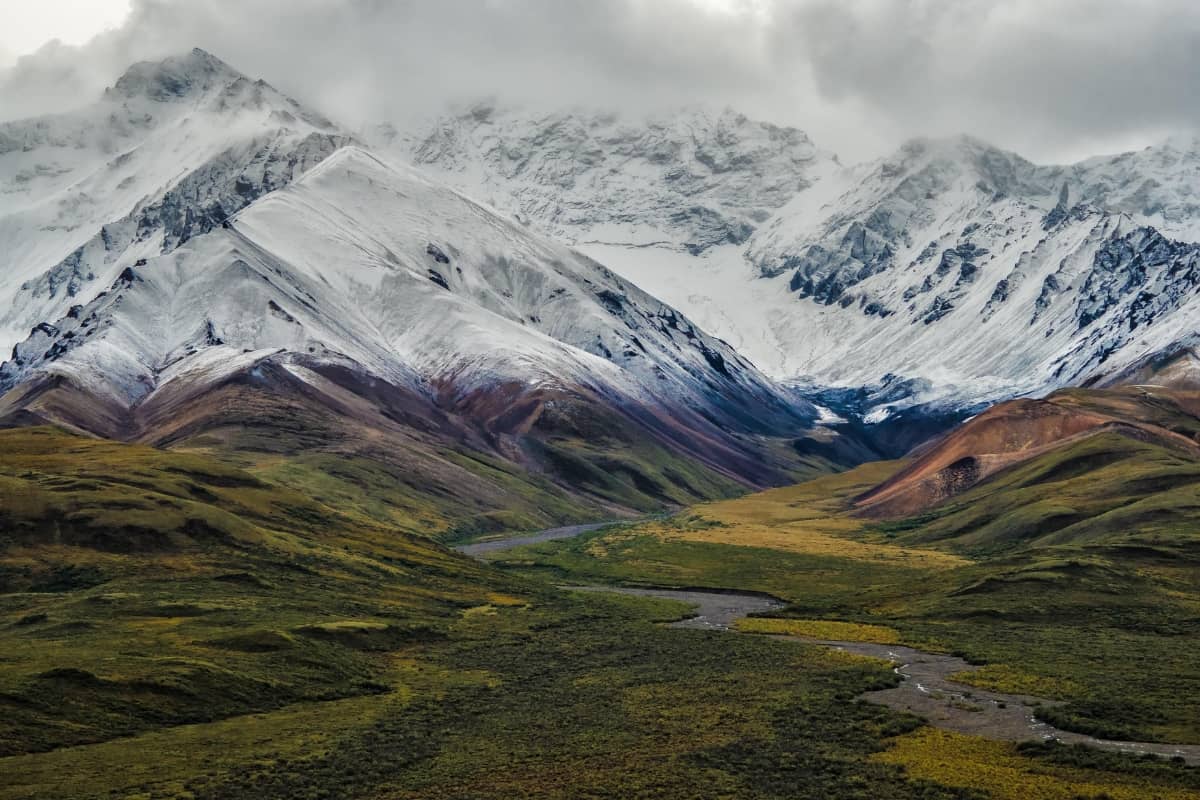Denali National Park is one of those places that feels almost mythical until you see it with your own eyes. Nestled in the heart of Alaska, this expansive park is home to North America’s tallest peak, Mt. Denali, and is surrounded by a breathtaking landscape of rugged mountains, braided rivers, and vast tundra. During my visit, I was able to experience the grandeur of this wilderness, and it was an adventure that left a lasting impression on me.
Why Visit Denali National Park?
Denali National Park is Alaska’s most popular land attraction, and for good reason. The park is a showcase of some of Alaska’s most iconic sights. Standing at over 20,000 feet, Mt. Denali dominates the landscape, offering a stunning backdrop for those lucky enough to catch a glimpse of its peak. The park is also home to a diverse array of wildlife, including grizzly bears, moose, caribou, Dall sheep, and wolves. As I traversed the park, the possibility of spotting these majestic creatures added an element of excitement to every moment.
The Journey to Denali
Getting to Denali is part of the adventure. From Anchorage, it’s about a 5.5-hour drive or an 8-hour journey by train. I opted for the scenic drive, which allowed me to take in the vast Alaskan wilderness along the way. The drive itself was beautiful, with the landscape gradually shifting from dense forests to open tundra as I approached the park.
For those coming from Fairbanks, the drive is shorter, about 2.5 hours, or 4 hours by train. Whether you arrive by car, train, or motorcoach, the journey to Denali is an experience in itself, filled with stunning views and the anticipation of what lies ahead.
How Long to Stay?
Given the park’s size and the travel time required to reach it, a day trip isn’t really feasible. I decided to stay for three nights, which allowed me to fully immerse myself in the park’s offerings. For those with more time, staying in a lodge deep within the park, such as in Kantishna, offers an even more secluded experience, away from the crowds.
If you’re short on time, two nights at the park entrance area might suffice, giving you one full day to explore the park. However, I’d recommend staying longer if possible. The more time you spend in Denali, the greater your chances of seeing the mountain, which is often shrouded in clouds due to its size creating its own weather patterns.
6 Things to do in Denali National Park
Denali is a vast wilderness, and there are many ways to explore it. Most visitors, including myself, start with a bus tour along the Denali Park Road. This road stretches for 92 miles into the park, offering access to some of the most scenic and wildlife-rich areas. I chose the hop-on, hop-off Park Shuttle, which allowed me to explore different sections of the park on foot.
As the bus wound its way along the narrow road, the views were nothing short of spectacular. We passed through forests, crossed glacial rivers, and climbed high into the mountains. The further we went, the more remote and wild the landscape became. I’ll never forget the moment when the bus rounded a corner, and we saw a grizzly bear ambling across the road, seemingly oblivious to our presence. It was a humbling reminder of the wildness of this place.
1. Hiking in Denali

One of the best ways to experience Denali is on foot. The park offers countless hiking opportunities, from easy strolls near the visitor center to challenging backcountry treks. I spent a day hiking some of the front-country trails, where I encountered a variety of landscapes, from dense spruce forests to open tundra. The tundra, in particular, was a highlight for me. The soft, spongy ground made for a unique hiking experience, and the expansive views made me feel like I was standing on top of the world.
For those looking for a more structured experience, guided hikes are available, offering insights into the park’s ecology and history. Whether you choose to hike on your own or with a guide, hiking in Denali is an opportunity to connect with nature in a profound way.
2. Cycling Through Denali
In addition to hiking, cycling is another fantastic way to explore the park. I rented a bike and cycled a section of the Park Road, which was an exhilarating experience. The road is narrow and winding, with steep drop-offs and breathtaking views around every bend. Cycling allowed me to move at my own pace and stop whenever I wanted to take in the scenery or watch for wildlife.
One of the most memorable moments of my trip was when I spotted a group of Dall sheep grazing on a hillside. I quietly dismounted and watched them from a distance, feeling a deep sense of awe at being so close to these wild animals in their natural habitat.
3. Flightseeing Over Denali
No trip to Denali would be complete without taking to the skies. I booked a flightseeing tour from Talkeetna, a small town located south of the park. The weather was clear that day, and as our small plane soared above the rugged peaks of the Alaska Range, I was treated to some of the most breathtaking views I’ve ever seen.

We flew around the towering peak of Mt. Denali, its snow-covered slopes gleaming in the sunlight. From above, the mountain looked both majestic and intimidating, a reminder of the raw power of nature. The highlight of the flight was when we circled the peak, coming so close that it felt like we could reach out and touch it. It was an experience that left me speechless.
For those looking for even more adventure, some flightseeing tours offer glacier landings, allowing you to step out onto the ice and take in the vastness of the Alaskan wilderness from a unique perspective.
4. Wildlife Viewing in Denali
One of the main draws of Denali is the opportunity to see wildlife in its natural habitat. Throughout my visit, I was fortunate enough to see a variety of animals, including moose, caribou, and Dall sheep. The sight of a grizzly bear lumbering across the road was a highlight, but I was equally thrilled by the smaller encounters, such as watching a fox dart through the brush or spotting a bald eagle soaring overhead.
The park is home to a healthy population of wolves, though they are notoriously elusive. While I didn’t see any during my visit, knowing they were out there added to the sense of wildness that permeates Denali.
5. The Majesty of Moose: Alaska’s Gentle Giants
Moose are the largest members of the deer family, and they are iconic in Alaska, where they are often referred to as “swamp donkeys” due to their size and ungainly appearance. Standing up to 7 feet tall at the shoulder and weighing as much as 1,500 pounds, these animals are nothing short of impressive. However, despite their size, moose are known for their reclusive nature, often hiding in the dense forests and wetlands of Denali.

My first encounter with a moose in Denali was during a bus tour along the park road. As we rounded a bend, the bus driver slowed down and pointed towards a thicket where a large bull moose was grazing. The sight of this massive creature calmly chewing on willow branches was mesmerizing. Its long, spindly legs, which seemed almost too thin to support its enormous body, gave it a somewhat awkward appearance. Yet, there was an undeniable grace in its movements.
Later, during a hike near the park’s entrance, I stumbled upon a mother moose and her two calves. The calves, with their gangly legs and oversized ears, were the picture of youthful innocence. The mother, however, was a towering figure, exuding a quiet but powerful presence. It was clear she was wary of my presence, and I kept a respectful distance, watching as she led her calves deeper into the forest.
Understanding Moose Behavior
One of the most intriguing aspects of moose is their behavior, particularly how they interact with their environment and with humans. Moose are generally solitary animals, except for mothers with calves or during the mating season. They are most active at dawn and dusk, which is when you are most likely to spot them in Denali.
Despite their seemingly docile nature, moose can be dangerous, especially if they feel threatened. This is particularly true for mothers with calves, who will not hesitate to charge if they perceive a threat to their young. It’s essential to maintain a safe distance from moose, both for your safety and theirs.
During my time in Denali, I heard numerous stories from locals and fellow travelers about close encounters with moose. One particularly memorable story came from a college student who spent a summer working in Denali. He recounted how he once found himself face-to-face with a bull moose while hiking in the park. The moose, startled by his presence, stood still for what felt like an eternity before slowly turning and walking away. The student described the encounter as both terrifying and awe-inspiring—a moment that highlighted the sheer power and unpredictability of these animals.
The Risks and Realities of Moose Encounters
Moose may appear slow and cumbersome, but they are incredibly agile and can run up to 35 miles per hour. They are also excellent swimmers, capable of crossing large bodies of water in search of food. In winter, moose rely on their long legs to navigate through deep snow, a skill that allows them to access food sources that other animals cannot reach.
However, the same traits that make moose so fascinating also make them a potential hazard, particularly on roads. Moose-vehicle collisions are a serious concern in Alaska, and drivers are advised to exercise extreme caution, especially at night when moose are most active. These animals are so tall that their bodies often impact the windshield, leading to severe accidents. In fact, locals often joke that it’s safer to aim for the moose’s rear end if a collision seems unavoidable—a grim reminder of the dangers these animals can pose.
Despite these risks, the people of Alaska have a deep respect for moose. They are seen as a symbol of the state’s wild, untamed nature, and their presence is considered a blessing. Many Alaskans share a deep connection with these animals, having grown up with them as a constant presence in their lives.
Tips for Moose Viewing
For those planning to visit Denali, there are a few tips to keep in mind when it comes to moose viewing:
- Stay Safe: Always maintain a safe distance from moose. If you encounter one on a trail, give it plenty of space to pass. Never approach a moose, especially if it has calves.
- Be Aware of Your Surroundings: Moose can be difficult to spot, particularly in dense forests. Keep your eyes peeled, and listen for the sounds of breaking branches or rustling leaves—these could indicate a moose nearby.
- Drive Carefully: If driving in Denali, be especially cautious at dawn and dusk, when moose are most active. Reduce your speed and stay alert for any movement along the sides of the road.
- Respect Their Space: Moose are wild animals, and it’s essential to respect their space. Avoid loud noises or sudden movements that could startle them.
- Photography Etiquette: If you’re lucky enough to spot a moose, take your photos from a distance. Use a zoom lens if possible, and avoid using a flash, which can startle the animal.
6. Rafting and Ziplining
For those seeking an adrenaline rush, Denali offers plenty of opportunities for adventure. I spent an afternoon rafting down one of the park’s glacial rivers, an experience that was both thrilling and awe-inspiring. The icy waters rushed past as we navigated the rapids, the towering peaks of the Alaska Range rising above us.
Another highlight was ziplining through the forest canopy. Flying through the treetops, with the mountains as a backdrop, was an exhilarating experience that gave me a new perspective on the park’s landscape.
Winter in Denali
While most visitors come to Denali in the summer, the park is also a magical place in the winter. Although I visited in the warmer months, I couldn’t help but imagine what it would be like to see Denali covered in snow, with the Northern Lights dancing overhead. Winter activities in the park include dog sledding, snowshoeing, and even aurora watching. For those willing to brave the cold, Denali in winter offers a serene and otherworldly experience.
Sustainable Travel in Denali
Visiting a place as pristine as Denali comes with a responsibility to protect it. Throughout my trip, I made a conscious effort to follow Leave No Trace principles, minimizing my impact on the environment. I used reusable water bottles and bags, and made sure to pack out all my trash. Denali is a place of incredible natural beauty, and it’s up to all of us to keep it that way.
Reflections on My Time in Denali
As I reflect on my time in Denali, I am struck by the beauty and fragility of this wild place. The park’s vast landscapes and diverse wildlife are a testament to the power of nature, and the moose, in particular, embody the spirit of Alaska. These animals, with their awkward grace and quiet strength, remind me of the importance of respecting and preserving the natural world.
Visiting Denali National Park was more than just a trip—it was an experience that deepened my appreciation for the wild places of the world. Whether it was watching a mother moose lead her calves through the forest or standing in awe as a bull moose grazed in a meadow, each moment in Denali was a reminder of the incredible beauty that exists in the world’s untamed corners.
For anyone considering a visit to Denali, I cannot recommend it enough. It’s a place where you can truly disconnect from the chaos of the modern world and reconnect with nature in its purest form. And if you’re lucky, you might just have a close encounter with one of Alaska’s most iconic residents—the majestic moose.
Conclusion
Denali National Park is a place of raw beauty and untamed wilderness. Its landscapes are vast, its wildlife abundant, and its sense of solitude profound. Among the many creatures that call this park home, the moose stands out as a symbol of the rugged, enduring spirit of Alaska. My journey to Denali was filled with unforgettable encounters, and the memories of those moments continue to inspire me long after I returned home. For anyone seeking an adventure in one of the most stunning natural settings on earth, Denali National Park is an experience not to be missed.






